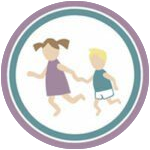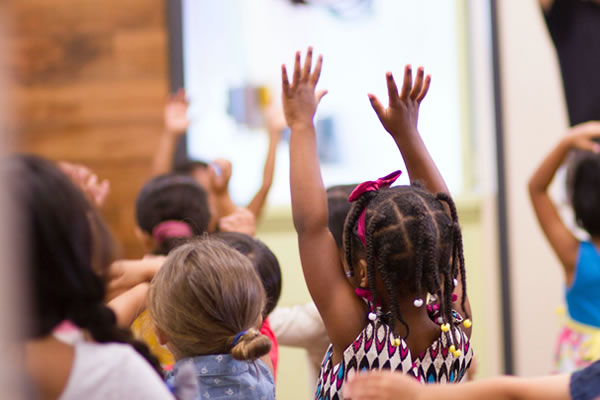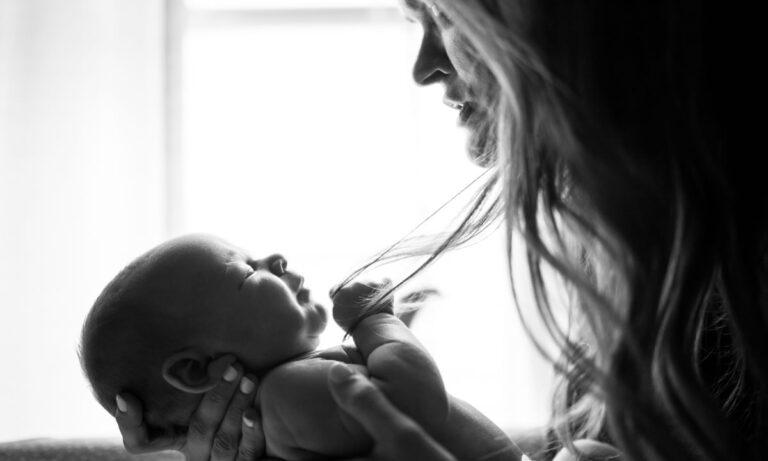My daughter used to draw and sing and my son used to build from blocks and legos. I sang with my daughter and drew side by side with her, and my son and my husband used to build side by side. Gradually both children stopped creating, saying they don’t like to or cannot. My daughter asks me to draw for her and my son asks his father to build for him. We are happy to do it for them (and we do,) but are concerned about their loss of interest in doing things on their own. How can I assist them in enjoying their own creations?
A: Your children stopped creating because you joined them. They want to be the only stars in their own discovery and creation show. Most adults would also lose interest in doing something for themselves if someone else joined in. By her nature, a child is pleased with her own…
…creation, be it singing, art, building, dancing, or whatever she loves to do. The mind’s perception of itself is one of joy and pleasure, even when the child is frustrated in the process. This is nature’s miraculous program that shines through young children’s eyes as they celebrate their own magnificence. All they want to say is, “Look at me, mom,” or, “Look at what I made.”
A child is never paralyzed and discouraged when she learns to walk or talk, and in the same way, is always happy with her own expressions. She feels accomplished when singing, dancing, painting, acting, or building. Without hearing your voice, your daughter sounded to herself like a professional singer. Without a comparison, she loved her own art. Without your husband’s participation, your son marveled at his own creations.
For a young child, the presence of an adult doing something better than she does can blow the bubble that is meant to protect her creativity. Her confidence can be thwarted and often is. Seeing you draw, your child may realize, “Oh, she can draw a real person…” On her own, she did not measure her own picture against her ability to draw a person but now that she sees her mom’s drawing, she does. She tries it and fails. She has lost the sense of pleasure and self-satisfaction. She has moved from enjoying the process to seeking a specific result set beyond her ability.
Many very loving mothers and fathers become their child’s playmates and creativity partners. The result is most often, “Mommy, draw me a clown,” or, “I don’t like to build. Daddy, you build me an airplane,” and, “I don’t know how to sing.”
Getting out of the way
We cannot breathe or eat for another. Likewise, we cannot build, sing, dance, or draw for another. Give your children blocks and crayons and let them be. Read a book, do your paperwork or watch them. Let them create rather than achieve an outcome.
Unlike painting a picture or building from blocks, singing or dancing can sometimes be a group production like a choir, singing rounds, duets, a family sing-along, or a group dance. Your child can be part of such collaboration only if she freely chooses to and without imposition or coercion.
When your daughter is humming or singing to herself, she is enjoying her own voice. Don’t steal her show or cover her sound by joining in. If you sing well, she might stop singing altogether; if your singing does not outshine hers, she may not get discouraged but you are most likely ruining her fun.
Likewise, if your son is building with blocks, don’t join and don’t build side by side. If your creation stays simpler than his, it would sometimes be harmless, but why take a chance? It is your child’s turn to be a child and to play. It is his childhood, not yours. You had your turn. He needs an adult parent.
If you draw, it is your enjoyment. Your daughter can only experience drawing by doing it. Provide the materials and a comfortable set-up, but don’t be another artist next to her.
Protecting your child’s creative autonomy does not mean not serving her in areas that require skill or serving her needs. Read to her, sing her to sleep if she wants to, serve her food, and help her dress and comb her hair. Stay connected while out of the child’s creative and autonomous play. You can even sing together if that is your daughter’s independent intent. I was able to improvise piano duets with my children by matching their level, by following rather than leading, and by getting out of the way as soon as I could tell that they were done with me.
Since your children have lost the desire and confidence to create on their own, I am guessing that your participation has stolen their show.
Protecting your child’s creative autonomy
To keep the child autonomous and emotionally free to create and play, avoid making comments, praising, and making a fuss over results. Children are not a display or a show. They live for themselves, just like you.
Praise and criticism thwart the child’s emotional freedom, replacing it with seeking approval and anxiety to do only what pleases others. For more on the harm of praise, read my three articles, The Price of Praise, in Life Learning Magazine, issues #, #, and # (Wendy, can you add the issue numbers here?)
When a child seeks approval through the activities she does for herself, she loses the freedom to create. This impacts the way she sees herself in other areas. She tends to see herself as not able and needs someone more skillful to do things for her.
Rebuilding the child’s creative and playful self-reliance
Your children will recover their creative confidence once your stop taking part in their activities. Like stopping any habit, the initial response may be resistance. But once your children rediscover the joy of their creative freedom, they will be done with your participation. When they say, “Mom, don’t build/sing/draw,” you will know they have recovered.
You can tell your children that you will be happy to watch, but you will not become a singer or a builder next to them.
To make the transition gentler, you can introduce new opportunities. From the start do not participate in these new activities. The children will know these as activities they do on their own. A new CD of songs, a new craft material, play-dough, swim class, etc.
If your child cries, insisting on your drawing or building, avoid feeding her dependency. Instead, validate her feeling and acknowledge the change you are making. You can say, “It is your creation. I made a mistake drawing next to you or for you. I am not going to do that anymore.”
You can ask if she would like to do something that is done together, “I too love doing things with you.” Offer something that is collaborative by nature like a board game, playing ball, taking a walk, or reading books. Your children will learn to distinguish their own creations from cooperative activities.
©Copyright Naomi Aldort
Do you want more information about HOMESCHOOLING? Look at the indispensable set of 7 CDs Trusting Our Children, Trusting Ourselves, which covers practically all major parenting and self-directed learning issues in one amazing package.










